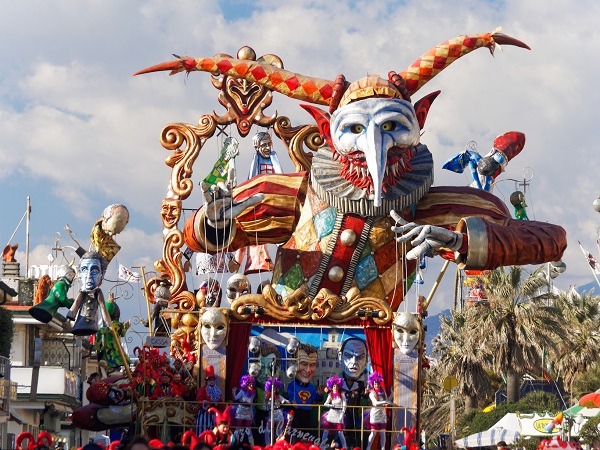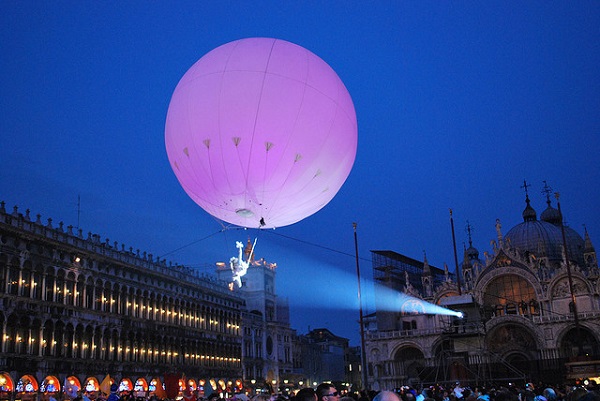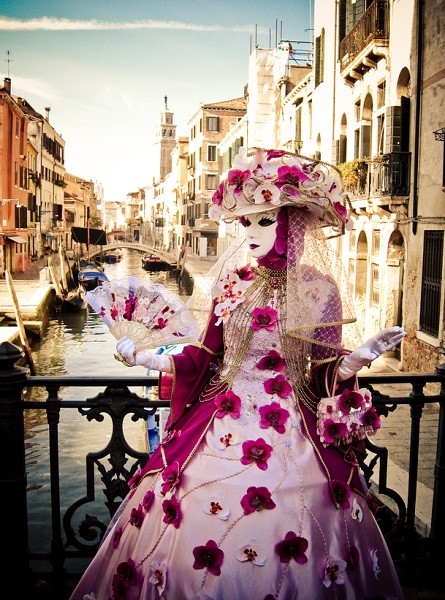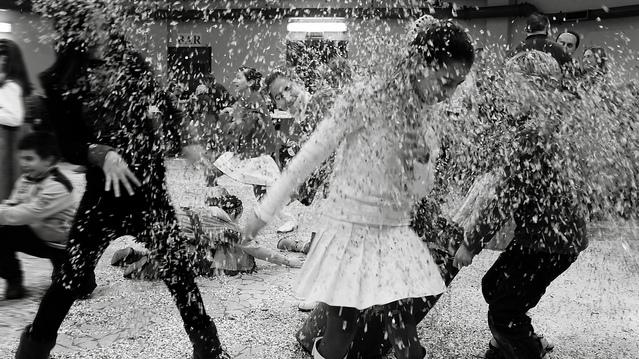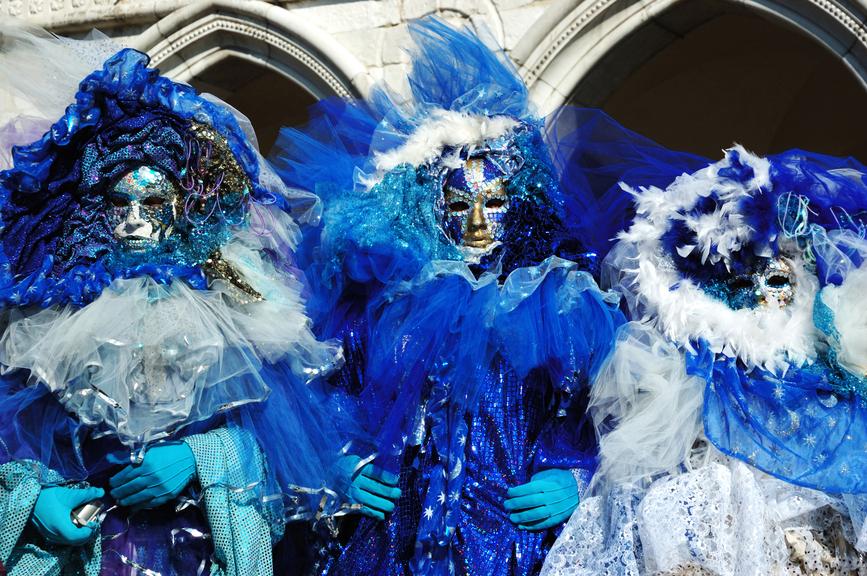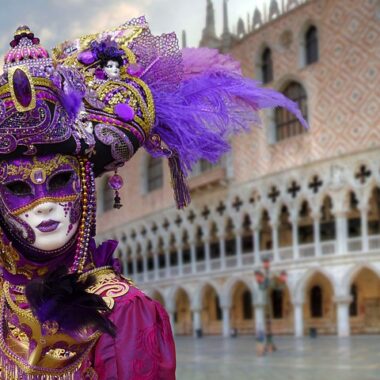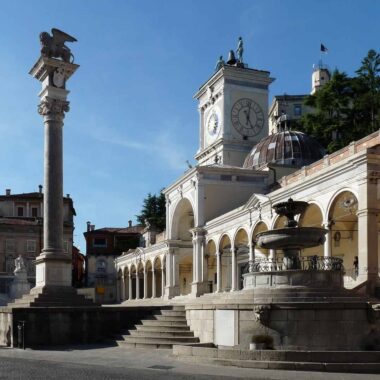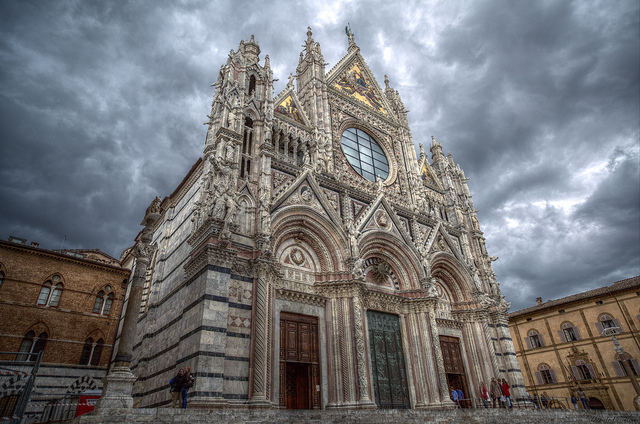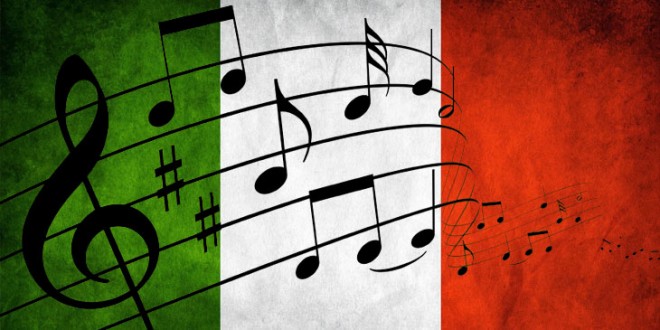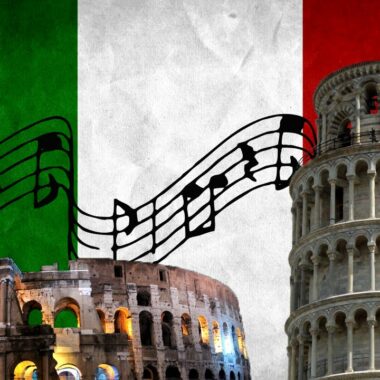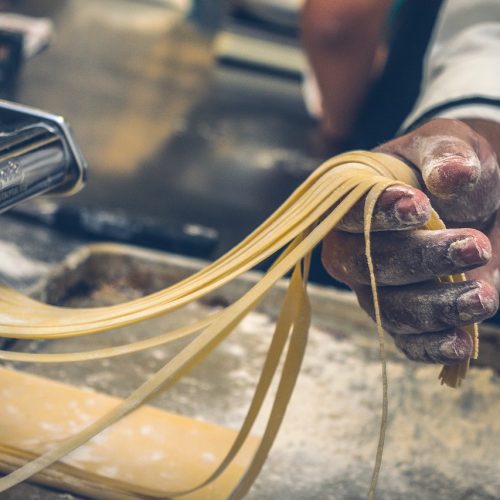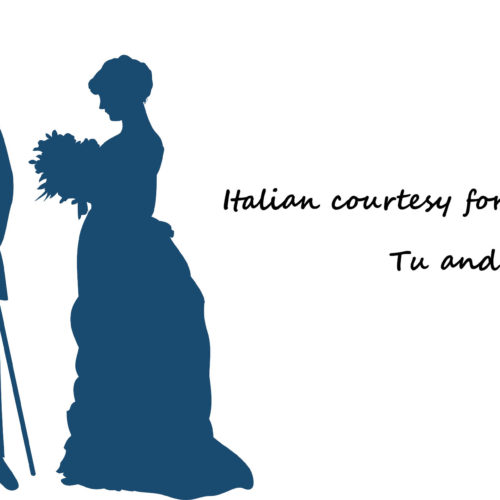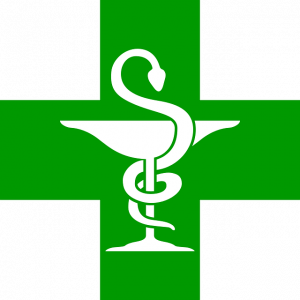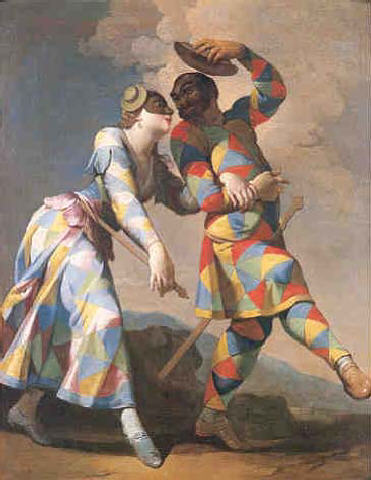Without a doubt knowing the vocabulary of Italian Carnevale is important if you plan to spend some time in Italy.
Carnevale‘s celebrations are hugely popular in Italy and some cities and town are known all over the world for the creativity and beauty of their parades.
Those of Venice, Viareggio and Cento are probably the most famous in the country and are known worldwide, too. If you decide to visit Italy during this very special time of the year, and maybe take part in one of its parades, it’s important you know a word or two from the typical vocabulary of the Italian Carnevale, to make sure you can fully enjoy celebrations!
The vocabulary of Italian Carnevale: from carri to trombette!
Carro di Carnevale
Carnevale floats, or carri di Carnevale, as we call them in Italy, are one of the major attractions during Carnevale time. Creative and often irreverent, the carri have political and social satire as their main topic, their parades a common sight in villages, towns and cities. The most beautiful are probably those of Cento and Viareggio.
Stelle filanti e coriandoli
Adored by children, but widely used by adults. Coriandoli are the equivalent of confetti, a word that, in Italian, actually means sugared almonds! Stelle filanti are the equivalent of streamers.
Volo dell’angelo
The “Flight of the Angel” is an amazing event taking place in Venice, host city to what is possibly the best known Italian Carnival in the world. Thanks to mechanical contractions a mysterious, disguised person jumps off the Campanile of San Marco and “flies” in the air. This tradition was born as a manner to celebrate and honor the Doge, an old political figure associated to Venice, and symbolizes the relevance of the Carnevale in this city.
Maschera
Mask. In Italy people usually wear masks for Carnevale, adults and children alike. This happens because Carnevale parties revolve around the idea of the masquerade: all people must wear a maschera.
Costume di Carnevale
Dressing up for Carnevale does not only mean wearing a mask, but fully changing your identity for an entire day or night; a costume di Carnevale, literally a Carnival costume, is often that of a traditional Italian mask, whose looks and personality have been passed on to us from older local traditions.
Lasagna
This dish is really popular everywhere in the world and requires very little explanation. It is conventionally associated to Carnevale because it is customary, in many parts of the country, to make it this time of the year, although lasagne remain a popular meal choice all year round.
Martedì Grasso
This is the term Italians use to refer to Shrove Tuesday or Mardi Gras. This day represents the end of seven ‘fat’, grassi, days. This week of heavy, rich eating is closely tied to its religious origins: during this week people would eat the most exquisite food they had in the house before the beginning of the Quaresima, Lent.
Trombetta
Trombetta is a ‘must’ at Carnevale parties. Trombette, party horns, used at Carnevale, can be pretty powerful affairs. One of the most used is the lingua di Menelik, Menelik’s tongue, which does not only honks, but uncurls its long, papery arm when played.
Berlingaccio
If you are around Florence, you should definitely visit the city the Thursday before Carnevale. People celebrate this day with a party exalting the traditional Florentine dishes for this period: the schiacciata alla fiorentina and the berlingozzo, which is a typical cake whose shape is similar to that of a donut.
A Carnevale ogni scherzo vale!
This stands at the very heart of the vocabulary of Italian Carnevale: people have to accept every joke and prank, as “On Carnival day, anything goes:” you have been warned! Don’t get upset if they trick you!
Edited by Francesca Bezzone

